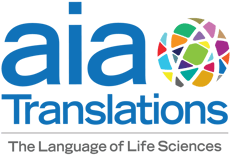Translation and Humanity: Who’s Behind the Screen and Why We Forget Them
Medical Pharmaceutical Translations • Nov 3, 2025 11:59:59 AM

In today’s digital age, translation often feels like an invisible process. Files are uploaded, projects are managed, and within hours, perfectly formatted documents come back—ready to be published, submitted, or shared. The process seems seamless. But behind that polished text, there’s something that technology can’t replicate: the human mind, with all its nuance, empathy, and cultural intuition.
We rarely stop to think about who transforms meaning across languages. Who decides how to phrase a complex medical term so that a doctor in Buenos Aires understands it exactly as a researcher in Berlin intended? Who ensures that a regulatory document not only complies with guidelines, but also resonates with clarity and respect for the target culture?
Those invisible professionals are translators—real people behind the screens.
The Human Mind Behind the Message
Every translation carries a piece of its translator’s humanity. It’s shaped by their judgment, their ability to balance precision with readability, and their sensitivity to how words will be perceived in another language.
Machine translation can process vast volumes of text in seconds, but it doesn’t interpret intention. It doesn’t sense the emotional undertone in a patient leaflet or the ethical responsibility behind a clinical trial disclosure. Translators do. They feel the weight of accuracy because they know that their words can affect real lives.
This human factor is what ensures trust in global communication—especially in fields like medicine and life sciences, where empathy and clarity are as critical as correctness.
Why We Forget the Humans Behind Translation
In a world of instant communication, speed often overshadows humanity. Automation and AI have made translation faster and more accessible, but they’ve also made it easier to overlook the people ensuring quality behind the scenes.
Translators tend to work quietly, often without credit. Their work is seen as a service, not an art or a responsibility. And yet, they are the very link that allows knowledge, safety, and understanding to cross borders.
When we forget the humans behind translation, we risk losing connection—not only between languages but between people.
Reclaiming the Human Connection
Recognizing translators as essential communicators means valuing more than output—it means valuing expertise, cultural awareness, and emotional intelligence. In the medical and scientific world, this recognition is vital. Every translated consent form, label, or protocol involves a translator’s ethical choice to protect meaning and ensure comprehension.
At its core, translation isn’t just about transferring information. It’s about empathy: the ability to understand how another person might read, interpret, and feel through language.
Technology can assist, but humanity gives words their power.
In the end, translation is not just a process—it’s a human bridge.
And behind every bridge, there’s someone who built it carefully, word by word.
